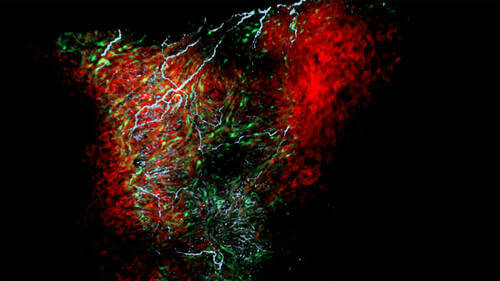NOTRE DAME, Ind. — A newly identified heart cell may be responsible for controlling heart rate, according to a recent study. Similar to distinct cells in the brain that regulate blood flow, these cells maintain the rhythmic patterns of the heart, according to a team at the University of Notre Dame. The implications of this research could lead to the creation of better treatments for cardiovascular disease — the number one killer worldwide.
Researchers found the number of “nexus glia” cells play a significant role in whether or not someone develops an arrhythmia — or irregular heartbeat. These cells mimic essential brain cells, called astrocytes. In experiments where scientists removed them, heart rates increased. In experiments where the team denied access to a critical gene that promotes their growth, hearts continued to beat abnormally.
“For me the definition of great science is something that you discover that opens up even more questions, and this, I think, is the definition of that,” says lead researcher Cody Smith in a university release. “It’s a discovery that now we have 100 questions we didn’t even know existed, so we’re following up on them to explore this path that has never been studied before.”
Brain-like cells live all over the body
Once believed to only dwell in the brain and spinal cord, scientists have now found that astrocytes are present in many other parts of the body, including the pancreas, lungs, and spleen. This prompted a recent Smith Lab graduate, Nina Kikel-Coury, to look for cells similar to astrocytes within the cardiac tissue.
“I thought that if we could find a new cellular piece to the cardiovascular puzzle, it could be foundational for future work,” says Kikel-Coury, the first author of the paper.
So far, researchers have not found a link between congenital heart problems and the identification of these specific heart cells. However, study authors note the nexus glia cells sit in the outflow tract of the heart — a place where many heart disorders develop. These cells, first discovered in zebrafish cardiac tissue, have now been detected in both humans and mice.
Kikel-Coury is especially curious about how these cells contribute to dysautonomia, a category of medical diseases which result from problems with the autonomic nervous system. The study author has one of these disorders, postural orthostatic tachycardia syndrome (POTS), which causes lightheadedness, fainting, and a fast rise in heart rate. The newly discovered nexus glia cells may have a link to POTS, but Smith says it’s too soon to know for sure at this point.
“We don’t completely know the function of these cells, but the concept that if you get rid of them, heart rates increase, could link it to certain disease cases,” says Smith. “I think these glial cells could play a pretty important role in regulating the heart.”
“This is another example of how studying basic neurobiology can lead to the understanding of many different disorders,” the researcher concludes. “I’m excited about the future.”
The research is published in PLOS Biology.
